Shannon V. OKeets
Posts: 22095
Joined: 5/19/2005
From: Honolulu, Hawaii
Status: offline

|
And here is the second. Also awesmoe. 
====
3.4.8 Land Combat
Successfully resolving your land combats in an impulse depends, firstly, on which combat table you are using; secondly, on the forces you have at your disposal against the forces defending against your attack; and finally (perhaps most importantly), on the result of your combat die roll (represented in MWiF by random number generation).
Probability of Outcomes
When using the 1D10 CRT your probabilities of results are linear: 10% for each of the 10 possible die rolls. That means you have as good a chance of getting the best result (10) as the worst (1). Die roll modifiers are extremely important here; a favorable sum of modifiers can make an otherwise unpleasant attack quite palatable. The most important component of achieving good attack results, however, remains the odds level.
When using the 2D10 CRT the probabilities for die rolls are much different, with extreme results occuring less frequently and the middle results occurring most often:
Die roll Probability
2 1%
3 2%
... ...
10 9%
11 10%
12 9%
... ...
19 2%
20 1%
So, on the one hand, modest or even mediocre attacks have the potential to be devastating to the defence (i.e., roll a high number), and on the other hand, that even strong attacks can go bad (“2! I rolled a 2 with two 10 sided dice?”). Because odds levels translate into die roll modifiers, die roll modifiers are everything on this chart, especially as to get the best attack results you must get net results higher than 20.
Evaluating an attack• 1D10 Assault There are two perspectives for how 'good' an assault is: how favorable the casualty ratio is and whether the attacker stays organized or becomes disorganized. From the perspective of casualties, attacking with 2:1 combat odds or better is a reasonable attack, especially if the die roll modifiers are +0 or better. A good assault, from a losses perspective, is an assault at 4:1 or better.
From an organization point of view, the 1D10 Assault CRT is very unfavorable. Only once you reach 5:1 odds (with an unmodified die roll) do you have a 50% chance of your units remaining face-up.
On the whole therefore, you have a good assault if you achieve 4:1 odds, especially if your die roll modifiers end up as bonuses (so your die roll results range from 2 to 11 through 4 to 13, instead of 1 to 10).
• 1D10 Blitz The 1D10 Blitz CRT is more rewarding for the attacker than the Assault CRT. The losses you inflict with good results are identical to the Assault CRT; the losses you take are generally lower; and your forces are much more likely to remain organized after the attack.
This happy circumstance is in part arranged by the fact that the attacker is more likely to have positive die roll modifiers in a blitz due to combining armor bonuses with the bonuses for attacking disorganized units.
As such, you can consider yourself as having a good blitz attack if your combat odds are 3:1 or better, assuming you have positive die roll modifiers. At 3:1 combat odds, you have a base 60% chance of taking the hex and a base 30% chance of remaining organized, and each die roll modifier increases these chances by 10%.
• 2D10 (in general) From the chart above, you can see that 44%, or nearly half, of random-number results are in the middle range of 9-13, 28% are lower (in the range 2 through 8), and 28% higher (in the range 14 through 20). On the whole then, you have a 72% chance of getting a result of 9 or better.
• 2D10 Assault Based on the above analysis, a reasonable assault is one where you will get a combat result of 18 or better from the low end of this favorable range of rolls. That is, a reasonable assault is a +9 through +11 assault. An 18 means you take no losses during the battle despite being disorganized, and a 20 guarantees that you take the hex.
This shows that disorganizing units prior to attacking them is crucial when launching assaults, as an otherwise poor 2:1 (+4) or 3:1 (+6) assault becomes quite sensible if 2 or 3 of the defending forces are disorganized.
A good assault is a +12 to +14 (i.e., a die roll of 9 translates as 21 through 23 on the CRT) and an excellent assault is one that has +15 or higher modifiers.
• 2D10 Blitz Based on the above analysis, a reasonable blitz attack is one where you will at least take the hex 72% of the time, that is, a +7 or better blitz. This reasonable blitz becomes a good blitz in the +10-+11 range, and an excellent blitz in the +12 or better range (where at worst 72% of the time you will get a breakthrough and your forces will all remain organized save for bombarding artillery and supporting HQs).
Allocating Units to a Combat
As a general rule, you should aim to include in a combat enough units to take as acceptable losses: Militia, Garrison, and cheap divisions (if playing with these units) for assaults, and a motorized unit (division for preference) for blitzes (or for attacks which the defender gets to call the combat table if you have any participating ARM/MECH).
After that above requirement, you want to use high-factor units against strong defenders, and lower-factor units against weaker defenders, to ensure all your attacks are fairly reasonable. For blitzes, ensure that you have at least enough ARM or MECH to call the blitz, and in good weather you want to maximize your blitz bonuses.
When launching an attack in winter weather, you should aim to include as many winterized units as possible. If nothing else, your aim is to neutralize the weather penalties. The USSR, with its plentitude of winterized units in the late-game (all white-print USSR units and all USSR Mountain units and ski divisions) can even expect to earn winterized bonuses above and beyond neutralizing winter penalties, even in blizzard weather conditions.
Only use engineers and HQs when you must in combat: the former because they are few in number and precious, the latter because you want to have them available for reorganization or offensive chits. Generally, engineers are best used to spearhead o-chit-enhanced river crossings, or when you must assault a city without having enveloped it. Rarely do they come in handy to cross fortification lines (such as the Maginot).
Paratroopers are a different case. If you have the air transports and your opponents cannot effectively contest the skies, you should use them at every opportunity. When air superiority is not guaranteed, you should save them for key attacks, or simply as a serious threat, so your opponent keeps fighters in reserve to prevent your potential paradrops.
Shore Bombardment
Assuming you deployed your battleships in sufficient number to a theater where you are campaigning along the coast, you should aim to spread your shore bombardment out for: (1) the initial invasions, and (2) attacks along the coast up 1 or 2 hexes inland. Initial invasions are usually the most important attacks for which both offensive and defensive shore bombardment must be committed. To press inland, the attacker has to successfully land in the first place, and the best way to fend off an invasion is for the invaders to all die on the beaches.
After that, both offensive and defensive shore bombardment should be used when they will demonstrably affect the combat (e.g. result in an odds shift or two).
Ground Support
The attacker should rarely use ground support, unless it means getting an odds shift in his favor. Generally, the bonus provided by disorganizing enemy units and then attacking them is far more substantial; only an odds shift justifies the use of offensive ground support.
Defensive ground support, on the other hand, is immensely useful. Increasing the defender's factors can have a huge effect on decreasing the attacker's advantage, especially when there are fewer defending factors to begin with.
For example, given an attack of 20:5, if the attacker adds 5 factors of ground support, the odds change from 4:1 to 5:1. On the 2D10 CRT, the attacker adds 2 to his die roll modifier. But if the defender adds 5 factors, the odds drop from 4:1 or 2:1, and the attacker subtracts 4 from his the die roll modifier.
Playing Defence
Defence is difficult, especially when using the 2D10 combat chart. As a general rule, you want to stack your blitz units and anti-tank/anti-air guns in clear/desert hexes, your engineers in the cities, and other units in the cities, forests, swamps, and mountains. Defending from behind rivers is best of course, and if you have the ability to do so, you want to retire from one river line to the next after the first river line is crossed in force by the enemy.
It is also better to have strong stacks of units in alternating hexes than to have weak stacks of units in every hex. While it is true that the more attacks the attacker launches, the more likely that some of them will go wrong, it is also true that you will take more losses, which will tend to exacerbate your disadvantages over time. Your real aim is to funnel the opponent's attacks where you can best contain his advance and dissuade him from attacking you elsewhere (then pray he gets unlucky).
The best defensive hexes are mountains, especially if they have cities and river hexsides. These are few and far between in the major theaters of war (save for in China, the Caucasus, and the Balkans), so you will usually have to make do with forests and clear city hexes. In general you want to deny your opponent the ability to call blitz combats in hexes where he gets the blitz bonuses (clear and desert terrain).
Order of Attacks
Generally, this is of no moment: the order in which you resolve your land combats doesn't matter most of the time. When it does matter is when the outcome of an attack can affect nearby attacks.
For example, suppose you are attacking an empty coastal hex with an invasion (thus fighting a notional unit) and are also attacking an adjacent inland hex with enemy units. If you resolve the inland attack first, and the notional is no longer supported by an enemy zone of control, your invasion will now be much easier to conduct.
As another example, if by resolving attacks in a particular order you cut a hex you are attacking out of supply that also contains disorganized units, you will once again have an added advantage when you come to resolving the second attack. This is the classic envelopment attack, where a successful first attack puts an adjacent hex out of supply and easy pickings for the second attack.
So when planning your attacks during an impulse, keep an eye out for such possibilities and take advantage of them where they arise.
Invasions and Paradrops
Generally, invading or paradropping with units as part of a regular overland attack is not much different from launching the same attack without the combined arms support. What is different is when you are invading and/or paradropping onto hostile shores without the benefit of friendly land units already in theater. This can either be a tactical move (such as an invasion designed to deny Germany the use of Brest as a sub base for a turn or two) or a strategic invasion (such as Operation Sealion or Overlord).
You have four concerns when launching an invasion: you must clear the hex to destroy the notional unit (along with any other defenders), at least one of your attacking units must survive, at least some of your attackers should remain organized, and you must be aware of what counter-attack capability your opponent has (if you have not robbed him of it via ground strikes earlier in the turn or impulse).
The easiest invasion/paradrop is against a notional unit (only) in clear, non-city terrain. This is also the easiest beachhead to get blitzed off of, so you may want to invade into cities or onto mountain hexes. This can dramatically increase the difficulty of the attack, of course, but if successful, your opponent will have a harder time digging you out.
1D10 CRT
As a general rule, to ensure the best chances of getting ashore with some army left over and organized, you should aim to invade at no worst than 4:1 odds. Against notional-only or 1-unit defences, you have a base 90% of getting ashore, a base 60% chance of taking no losses, and a base 30% of remaining organized. If you are using divisions and have the CW or US armoured marines, when attacking non-city clear hexes you can use the blitz CRT, which retains the 90% of getting ashore, but improves your losses to a 70% chance of no losses, and a 50% chance of staying organized. Against 2- or 3-unit defences it will be very difficult to get 4:1 combat odds, so on the whole you should avoid such invasions unless they are of key hexes like Gibraltar or Tokyo.
2D10 CRT
When invading with the 2D10 CRT, if you are assaulting the target hex, your objective is to get, if possible, at least a +13 attack to avoid the dreaded '14' result (you also have a tidy 85% chance of clearing the hex no matter how many defenders it has and a 64% chance of staying completely organized and not taking any losses). Obviously, this is only possible when land o-chits are involved or when dropping on a weak defence (notional units only or out-of-supply disorganized units).
If a +13 invasion/paradrop is not feasible, calculate to see if a +11 is (72% of getting a shatter result), or, failing that, if you can at least get a typical reasonable assault (+9).
Of course, again, if you can use the armoured marines to call a blitz, you are in business, as suddenly any net result of 16 or better (72% with a +7) takes the hex, and any net result of 21 (72% with a +12) leaves you entirely organized and without losses.
Defending the Coast
The best way to defend against tactical invasions is to do so well before land combat begins, by having the forces in theater to wipe the invaders off the beaches as soon as they arrive; this will usually deter a tactical raid unless the attackers can pin down your counterattack forces for the turn.
For strategic invasions, you must accept that you cannot double-stack every hex you want to defend (save perhaps for hexes like Gibraltar). Instead, you have to funnel the invasion such that you can firstly contain it, and secondly blow the invaders off the beaches. As such, you must protect your counterattack forces with all the airpower you can muster, even if it means weakening your defence of the invaded hexes.
Usually, this means leaving short stretches of clear hexes where the invader only has to contend with 2-factor notionals (you should at least have every coastal hex in a unit's ZoC) that can be quickly bottled up and eventually destroyed.
For example, as the Axis powers defending Italy, you probably want the Allies to land either in the clear terrain near Taranto (but not in the city itself) or near Rome, and not in the mountains or Sicily. Leaving tempting stretches of coastal hexes that you have the ability to contain and/or eliminate immediately (always assuming that Allied airpower does not disorganize your counterattack forces, of course) is certainly preferable to having the Allies successfully landing somewhere in the mountains where you cannot hope to dislodge out.
Extreme Cases
There are three 'extreme cases' of land combat and land campaigning: low-density theaters (e.g., China and North Africa), the "killing space" or "bowling alley" of the Western Front, and the immense Eastern Front.
• Low-Density Theaters In low-density areas, neither side generally has a great deal of land units floating around. In such cases it is often better to try to out-manoeuver your opponent than to launch (or be subject to) attacks, as the low quantity of units means every loss is felt keenly. This is particularly the case for China and for the belligerents in Africa, for whom reinforcements are few in number and difficult to get into theater.
• The Western Front In France and north-western Europe, there are two regions that could be considered "killing spaces", (or if you are of a less bloodthirsty nature, "bowling alleys"), in which forces with armoured and air supremacy can run riot over their enemies. These are: France west of the Seine, and the area of France and Belgium between Paris and Brussels.
In the early years of the war, the Axis powers usually use the latter 'killing space' to knock over Belgium, France, and the BEF. This is usually not overly difficult as there are few hexes between Brussels and Paris. What can cause problems is that if the French have been successful at bringing troops home from overseas and/or bolstered by CW lending. Then it can be difficult to execute breakthroughs: your ravaging panzer corps will find themselves facing a solid defensive line with possibly a secondary line behind the frontline.
In the late game, the Allies must make use of both 'killing spaces' to destroy as much Axis war material as possible. In particular, once they have landed, the Allies must try to exploit the western killing space as best they can before the Axis retires across the Seine river. Once they have crossed the Seine themselves, the Allies must use the Flanders bowling alley in a mirror image of their early-war defeat and drive the Germans back in disarray to the Dyle and the Rhine. Allied air supremacy is key in this effort to disorganize as many Axis units as possible to prevent them from withdrawing in good order.
• The Eastern Front Stretching from the Volga to the Oder River and from the Baltics to the Balkans, the Eastern Front (at least, once Germany and the USSR are at war) is expected to be, in a word, massive. The bulk of German land units will usually be allocated to the Eastern Front, and the USSR is the only Allied power who engages the mighty German war machine on a major land front in Europe without first having to struggle ashore in Spain, Italy, France, or elsewhere.
In the early stages of a war on the Eastern Front, it is often the case that the Red Army suffers from insufficient unit density to hold a contiguous front line. If that situation arises, then the USSR often has to wage a war of manoeuver to avoid its army being encircled and destroyed, often with its forces being split into several mini-fronts. For their part, the Germans must be cagey when advancing or they could face supply problems if fast Red Army units break into their rear.
By contrast, by the later stages of the war, both sides have built up a substantial unit density, particularly once the front line reaches the Vistula and then the Oder river lines. The opportunities for manoeuver disappear and the conflict settles into a straight-out slugging match.
The Eastern Front also has multiple swathes of good tank country: Silesia and Western Poland, Hungary, Ukraine, southern Russia (until one hits the Caucasus, of course), and the region between Moscow and the Volga. Each side in turn must take advantage of these 'bowling alleys' to convert them into killing spaces to destroy as much of the enemy as is possible to accelerate their advances. Specifically, for Germany the region between the Dnieper and Don rivers is an ideal space to savage the Red Army, and for the USSR the region between the Vistula and the Oder is where slow or disorganized German forces can be overrun as the Red Army closes in on Berlin.
_____________________________
Steve
Perfection is an elusive goal.
|
 Printable Version
Printable Version
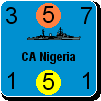





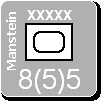
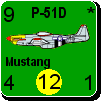

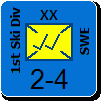
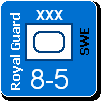
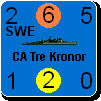

 New Messages
New Messages No New Messages
No New Messages Hot Topic w/ New Messages
Hot Topic w/ New Messages Hot Topic w/o New Messages
Hot Topic w/o New Messages Locked w/ New Messages
Locked w/ New Messages Locked w/o New Messages
Locked w/o New Messages Post New Thread
Post New Thread